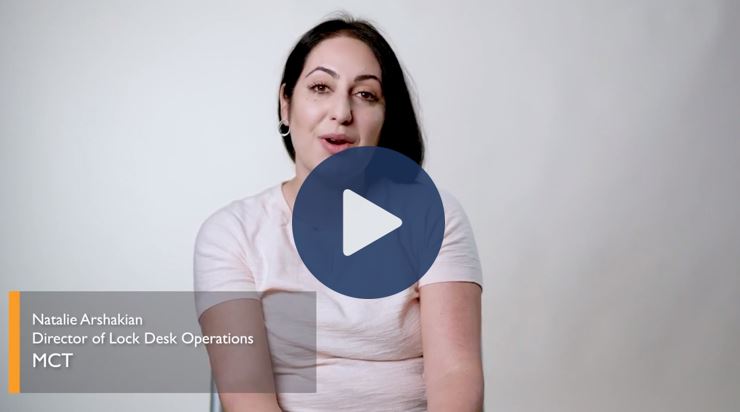The weekly MBS commentary, which we highly recommend you sign up for here if you are currently unsubscribed, provides added color and commentary on highlights from the bond markets each week, but often omits some headline stories.
We wanted to broach three newsworthy stories from 2023 that have not been addressed in the weekly commentary: changes to the Loan Level Price Adjustment (LLPA) matrix, Wells Fargo’s exit from the correspondent lending space, and the U.S. breaching its debt ceiling. While these have not been addressed in detail in the MBS commentary, we thought they warranted an in-depth look.

Changes to the Loan Level Price Adjustment (LLPA) Matrix
In a single moment, the fees for a vast majority of new mortgages in the U.S. changed. Let’s break it down. LLPAs, or fees and costs dictated by FHFA and imposed by Fannie Mae and Freddie Mac (the agencies), are based on loan features such as credit score, the loan-to-value ratio, occupancy, and now, debt-to-income ratio. This applies to any loan guaranteed by one of the agencies regardless of the lender, aka most loans in the U.S.
FHFA’s announcement (LL-2023-01), brings about a “modernized matrix (that) supports pricing model durability through market cycles and conditions,” and follows the LLPA changes announced in late October (with LL-2022-05) that eliminated upfront fees for certain borrowers and affordable mortgage products while introducing increases to the upfront fees for some cash-out refinance loans.
The primary new change is that Fannie and Freddie reduced the penalties for low credit (<680) and high LTV in an effort to open up borrowing. There are also some increased costs in the higher credit score bands. (all the detail can be seen at this link here.)
Highlights of the updated grids include:
- For the first time there is an agency-driven LLPA adjustment based on DTI
- The FICO/LTV grid goes below 60% LTV for the first time, opening up the option for more pricing granularity based on risk in the future
- All three major purposes (Purchase, Rate/Term Refi, and Cash Out) have separate FICO/LTV grids with their own attribute hits
- 2-4 Unit hits have dropped
- Condo hits have changed, but the most noteworthy change is that the hits apply to all amortization terms
- Cash Out adjustments were still implemented on February 1, 2023 as previously announced
“These changes to upfront fees will strengthen the safety and soundness of the Enterprises by enhancing their ability to improve their capital position over time,” said Director Sandra L. Thompson. “By locking in the upfront fee eliminations announced last October, FHFA is taking another step to ensure that the Enterprises advance their mission of facilitating equitable and sustainable access to homeownership.”
The changes go into effect for all whole loans purchased on or after May 1, 2023 and for loans delivered into MBS with issue dates on or after May 1, 2023. The lead time roughly aligns with a 90-day lock, or a 60-day lock with a 30-day extension. That means many lenders will begin to implement the changes in March and/or April.
Fortunately, FHFA provided a long implementation notice, though we encourage clients not to wait until the last minute to take them into account. If you are taking a lock longer than 60 days, you need to be aware that you could have some leakage in that production as these changes get implemented.
Examples of loans that won’t be affected are FHA/VA as well as certain jumbo and specialty products. “Non-conforming” loans (e.g., “jumbo” loans) are not impacted by this as they are not guaranteed by the agencies. Additionally, with so many borrowers forced to the sidelines from high home prices and mortgage rates, this LLPA change is unlikely to help or hinder those who are targeted by the change in the near-future.
Wells Fargo Exits the Correspondent Space
Wells Fargo is drastically shrinking its mortgage footprint: the bank will exit correspondent mortgage lending, a unit of the bank that buys loans from third-party lenders, and will only originate mortgages for its own clients and borrowers in minority communities.
Wells will also be significantly shrinking its servicing portfolio. Not too long ago, Wells was the biggest mortgage banker in the U.S., originating $201.8 billion in volume in 2019.
The change was largely telegraphed: Wells Fargo’s mortgage business has entangled Wells Fargo in regulatory probes and lawsuits over the last six-plus years.
The latest example was CFPB ordering Wells Fargo to pay $3.7 billion for widespread mismanagement of auto Loans, mortgages, and deposit accounts. The bank will pay a record $1.7 billion fine and $2 billion in penalties for harming millions of customers in the past decade.

Separately, a Bloomberg analysis found Wells Fargo approved 72% of refinance applications from White borrowers in 2020, but only 47% from Black homeowners. The bank boosted its acceptance rate in 2021, to 58% of Black mortgage refinancing applicants, but the figure for White borrowers also increased, leaving a 21-percentage-point gap.
“We are acutely aware of Wells Fargo’s history since 2016 and the work we need to do to restore public confidence,” Chief Consumer Lending Officer Kleber Santos said. “As part of that review, we determined that our home-lending business was too large, both in terms of overall size and its scope.”
At the close of 2022, Wells Fargo was servicing more than $600 billion agency MBS. Brace yourself for MSR multiples to come under some pressure for a time. Additionally, this should translate into higher margins in 2023.
U.S. Debt Ceiling and Potential Treasury Default
When the U.S. government reaches its debt limit, the legal ceiling on the amount the U.S. can borrow, it can no longer borrow money to pay off its debts, potentially forcing a default. The G.O.P., which has recently regained control of the House, is refusing to raise the limit without substantial cuts to social programs.
A U.S. default could cause serious damage to the global financial system, which relies on U.S. Treasuries as a safe investment. Markets have fallen on the possibility that the nation would default on its obligations, including paying the interest on Treasury bonds, thus potentially triggering a worldwide financial crisis.
Worries abound about liquidity in the Treasury market, which needs to attract a lot of money to roll over maturing debt.
Treasury Secretary Yellen said that the Treasury has begun employing extraordinary measures that should prevent a technical default until early June while waiting for Congress to raise the debt ceiling.
The department is altering investments in two government-run funds for retirees, in a move that will give the Treasury scope to keep making federal payments while it’s unable to boost the overall level of debt.
“The period of time that extraordinary measures may last is subject to considerable uncertainty,” Yellen wrote in a letter to congressional leaders. Still, “it is unlikely that cash and extraordinary measures will be exhausted before early June,” she said.
The U.S. Treasury announced that it plans to borrow $932 billion in Q1, $353 billion more than previously estimated. The Treasury expects to borrow $278 billion in Q2.
Expectations are that the Treasury will run out of cash around August if the debt ceiling isn’t boosted, but in order to avoid defaulting on U.S. debt, Treasury would “prioritize” payments on its bonds if it could no longer borrow funds to cover all its expenses.
The bondholders who own the U.S. Treasury debt would be first in line to receive interest and other payments, even if it meant delaying other obligations like government salaries or retirement benefits. This is a developing story, so stay tuned for more updates.
Subscribe for More Housing Market Updates
When you join our newsletter you get access to our daily and weekly housing industry commentary.



